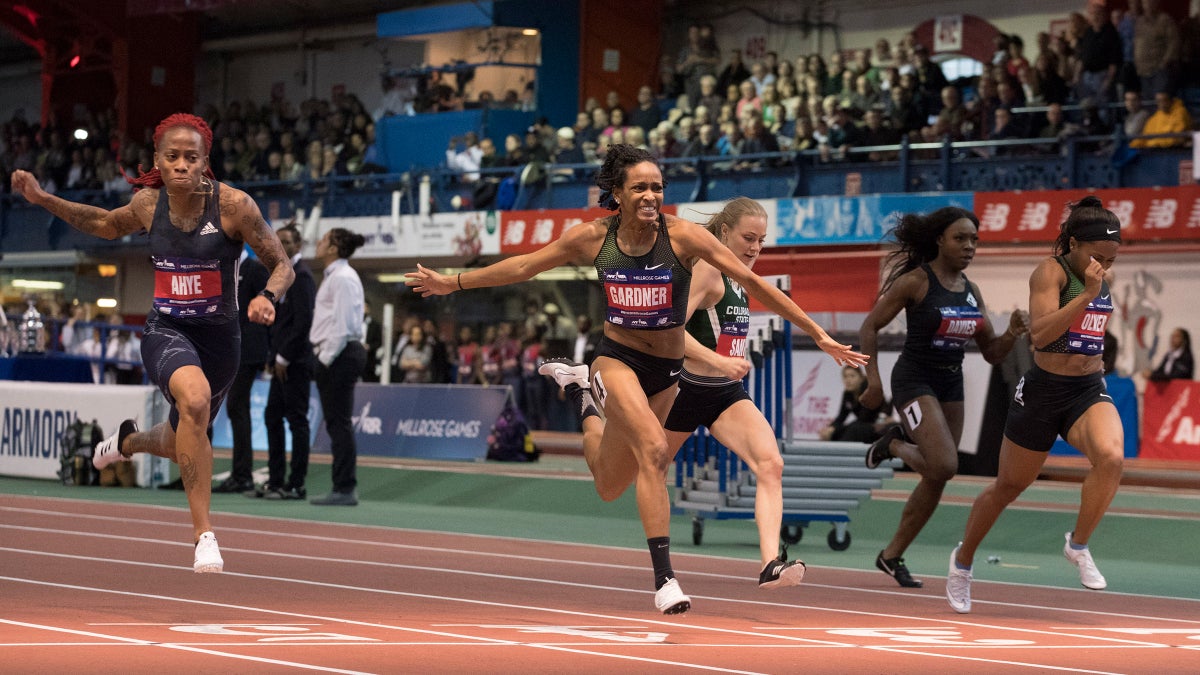
I love the marathon as much as the next running obsessive, but let’s face it: the live spectating experience is not always riveting. There’s usually a long build-up for a moment that’s over in a flash: Here they come! There they go! It reminds me of a Norwegian friend of mine who once went moose hunting somewhere close to the Arctic Circle. The way he tells it, he sat in the cold for a few hours only to have a frenzied pair of antlers flash into view for half a second before vanishing into the frozen underbrush. Doesn’t sound like fun to me, but I’m not a hunter.
Of course, some of the earliest iterations of the marathon took place indoors. Like the infamous mano a mano matchup between the American Johnny Hayes, the winner of the marathon event in the 1908 Olympics in London, and his rival, Dorando Pietri of Italy. That same year, the two men raced 262 laps around an indoor track in front of a packed house at the original Madison Square Garden. According to The New York Times, it was the “most spectacular foot race that New York has ever witnessed.” Pietri would win, in a showdown where the two protagonists “inhaled the dust and tobacco smoke with which the hall reeked” and where “a riot was narrowly averted.”
It’s safe to assume that the ambience will be a little more subdued at this weekend’s Millrose Games at the Armory Track in upper Manhattan, which are back in 2022 after being canceled last year for the first time in their 114-year history. Rather than a 262-lap battle of attrition, the traditional highlight of the meet is the Wanamaker Mile, where some of the world’s best mid-distance runners rip eight laps around on a 200-meter banked track.
In a sense, the hot box atmosphere of indoor distance running is a perfect counterpoint to the road marathon, where the action is diluted over two hours and 26 miles. In addition to their brevity—the 3,000-meters is typically the longest indoor event in professional competition—indoor races are often more physical and aggressively tactical, with athletes throwing elbows and jostling for position in confined space. There’s an intensity that can’t be replicated out of doors.
Or maybe I’m just keen on hyping this year’s Millrose Games, because I’m a little burned out on the marathon, especially after last fall’s glut of World Majors. I may be wrong about this, but it seems to me that recent years have only exacerbated the disproportionate amount of attention that the marathon receives compared to less ballyhooed running events. Blame it on Kipchoge, or super shoes, or the vast amateur contingent at the last Olympic Trials, but middle- and long-distance races on the oval tend to get overshadowed by marquee road marathons even though they often have the distinct advantage of being less boring. Fortunately for U.S. track and field, a new generation of mid-distance stars might shift the balance.
Like Athing Mu. Earlier this week, the 19-year-old reigning Olympic champion in the women’s 800-meters switched from her best event to enter in the women’s Wanamaker Mile, where she will compete against her fellow Olympian Elle Purrier St. Pierre, the defending Wanamaker champion and winner of the 1,500-meters at last summer’s Olympic Trials in Eugene. Given her speed, Mu usually moves down in distance (she anchored the women’s gold-medal winning 4×400-meter relay team in Tokyo) so it would be something of a shocker if she ends up contending for the win on Saturday. Nonetheless, she has looked so dominant in all of her races of late that it seems just feasible that she could maintain contact with the lead pack and dust everyone on the last lap.
Speaking of fast closers, Millrose will also feature the long-awaited professional debut of the splendidly equine Cole Hocker, who won an NCAA title in the 1,500-meters as a freshman for the University of Oregon and followed it up with a win at the U.S. Olympic Trials and a sixth place finish at the Games. Hocker, who now competes for Nike, is slated to race the 3,000-meters, where he will face off Cooper Teare and Conner Mantz, two fellow titans of the college scene who also just signed with Swoosh. Meanwhile, the men’s Wanamaker Mile will feature two athletes on opposite ends of the age spectrum: teenage sensation Hobbs Kessler (mile PB: 3:57.66) and 38-year-old Nick Willis, who will be attempting to run a sub four-minute mile for the 20th year in a row.
Track fans, in other words, will have plenty to savor this weekend, particularly those who are lucky enough to be in attendance at the Armory. Even in an era of hyper sophisticated cameras and mega HD, there are still some sports that translate better for live audiences, at least when it comes to apprehending the sheer physical prowess of the athletes. Indoor track, I would argue, is one of those sports; the venue is usually intimate enough that you can get a full sense of the velocity and power on display while still maintaining an overview of how the race unfolds.
That said, and with no disrespect to those raucous souls who packed Madison Square Garden more than a century ago, I think there’s a limit for how long the frisson of an indoor race can be sustained. There’s a reason, after all, that the longest event on the professional circuit is the 3,000. Having had the Wagnerian experience of spectating at an indoor marathon, I can confidently assert that this is one distance that works better outside. And on TV.
The post Why You Should Be Watching Indoor Track appeared first on Outside Online.

